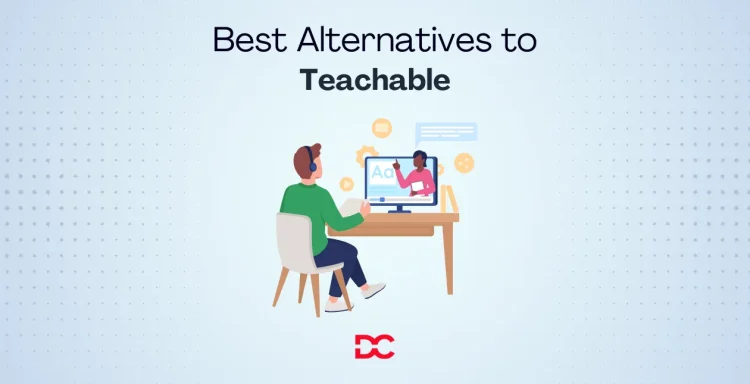Are you creating online courses but running into platform limitations? High transaction fees can erode profits, limited design options can dilute your brand, and weak marketing or community features can slow growth and student engagement.
This is a common challenge. With e-learning projected to exceed $645 billion by 2030, creators need flexible, scalable tools that support both pedagogy and business. Sticking with a platform that doesn’t fit can lead to lost revenue, lower completion rates, and time wasted on workarounds instead of teaching.
The good news: you don’t need to scale back your goals—just choose a platform that matches them. There are strong alternatives to Teachable that cover a range of needs, from all-in-one marketing suites and deeply customizable LMS options to WordPress-based solutions and budget-friendly starters.
This guide will help identify the best-fit alternatives so it’s possible to build, market, and grow an online education business without unnecessary costs or constraints.

Why Consider Alternatives to Teachable
Switching from Teachable isn’t about starting over—it’s about aligning the platform with business goals, margins, and student outcomes. Here are the most common reasons creators look for alternatives:
1. High or limiting fees
- Transaction fees on lower-tier plans can cut into margins.
- Add-ons and upgrades for essentials (certificates, advanced quizzes, affiliates, etc.) can raise total cost of ownership.
2. Customization and branding ceilings
- Limited design flexibility can make it hard to create a distinctive, on-brand experience.
- Tighter control over checkout, site structure, and page performance often requires more customizable platforms or WordPress-based LMS options.
3. Marketing and sales constraints
- Built-in email, automation, and funnels may be basic compared to all-in-one suites.
- Advanced segmentation, A/B testing, and cross-sell/upsell flows are easier in platforms that prioritize marketing.
4. Community and engagement needs
- Native community features may be minimal for cohort learning, live sessions, or gamification.
- Interactive learning (surveys, graded quizzes, note-taking, certificates) can be richer on LMS-first tools.
5. Scalability and ownership
- As enrollments grow, creators need better analytics, user roles, affiliates, multi-site, and API access.
- Greater control over data, hosting, and extensibility (plugins/apps) can future-proof the business.
6. Course formats and product mix
- If selling bundles, memberships, coaching, downloads, and subscriptions together, some platforms offer smoother packaging and pricing models.
- Marketplace distribution (e.g., for audience acquisition) may complement private hosting better than a single platform.
7. International selling and compliance
- VAT/GST handling, multi-currency support, localized checkout, and accessibility features may be stronger elsewhere.
8. Performance and SEO
- Faster pages, deeper SEO controls, and CDN/image optimization can improve traffic and conversions.
9. Budget fit at each stage
- Some tools offer lower starting prices, clearer limits, or no transaction fees—useful when testing offers.
- Others bundle hosting, email, funnels, and community, reducing the need for multiple subscriptions.
Consider alternatives if needing stronger marketing, deeper LMS features, tighter brand control, better economics, or a platform that scales with a growing product lineup. The right fit depends on priorities: margins, customization, engagement, data ownership, and long-term growth.
List of 7 Teachable Alternatives for Online Course Creators
| Platform | Key Features | Starting Price (Billed Annually) | Best For |
| Thinkific | Advanced quizzing, assignments, community spaces, white-labeling. | $36/month | Creators prioritizing student engagement and branding control. |
| Podia | Sells courses, digital downloads, webinars, and coaching in one place. | $33/month (Free plan available) | Solopreneurs looking for an all-in-one, user-friendly platform. |
| Kajabi | All-in-one marketing suite, email campaigns, sales funnels, podcasts. | $119/month | Serious entrepreneurs wanting a single tool for marketing and sales. |
| LearnWorlds | Interactive video, SCORM compliance, assessments, mobile app builder. | $24/month | Businesses and educators needing advanced, interactive learning tools. |
| LearnDash | WordPress LMS plugin, drag-and-drop builder, extensive integrations. | $199/year (for the plugin) | WordPress users who want full control and ownership of their site. |
| ClickFunnels | Advanced sales funnel builder, A/B testing, affiliate management. | $127/month | Marketers focused on high-conversion sales funnels for courses. |
| Udemy | Massive existing marketplace, handles marketing and payments. | Free to create (revenue share model) | Instructors who want to reach a large, built-in audience. |
1. Thinkific
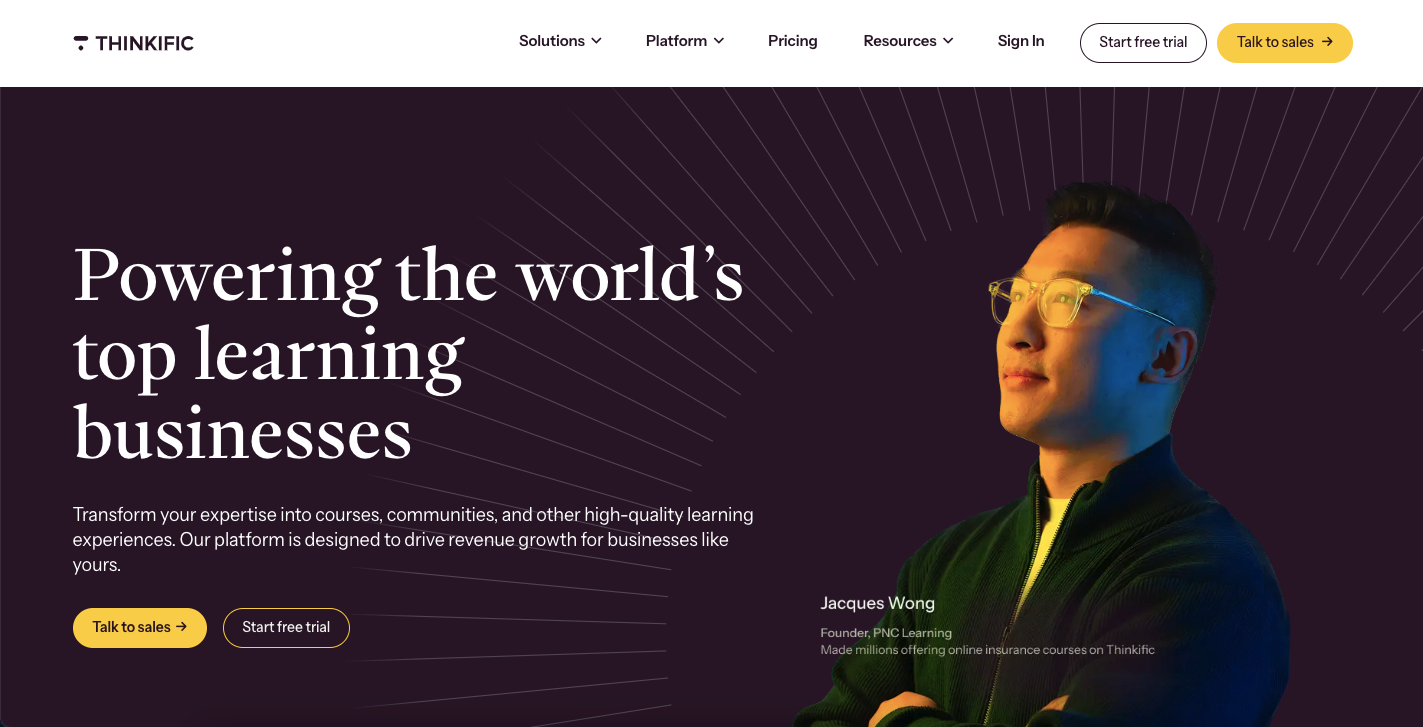
Launched in 2012 by co-founder and CEO Greg Smith, Thinkific was created to empower creators to build their own education empires. It stands out by giving users complete control over their course content, student data, and branding.
The platform is designed for those who prioritize the student learning experience, offering robust tools to build engaging communities and interactive course content.
Thinkific does not charge a transaction fee on its paid plans, which is a significant advantage for creators looking to maximize their revenue from course sales as they grow.
Features:
- Drag-and-drop course builder
- Live sessions and assignments
- Advanced quizzes and certificates
- Built-in community spaces
- Full white-labeling capabilities on higher plans
Starting Price: Offers a free plan with core features. Paid plans start at $36 per month.
2. Podia
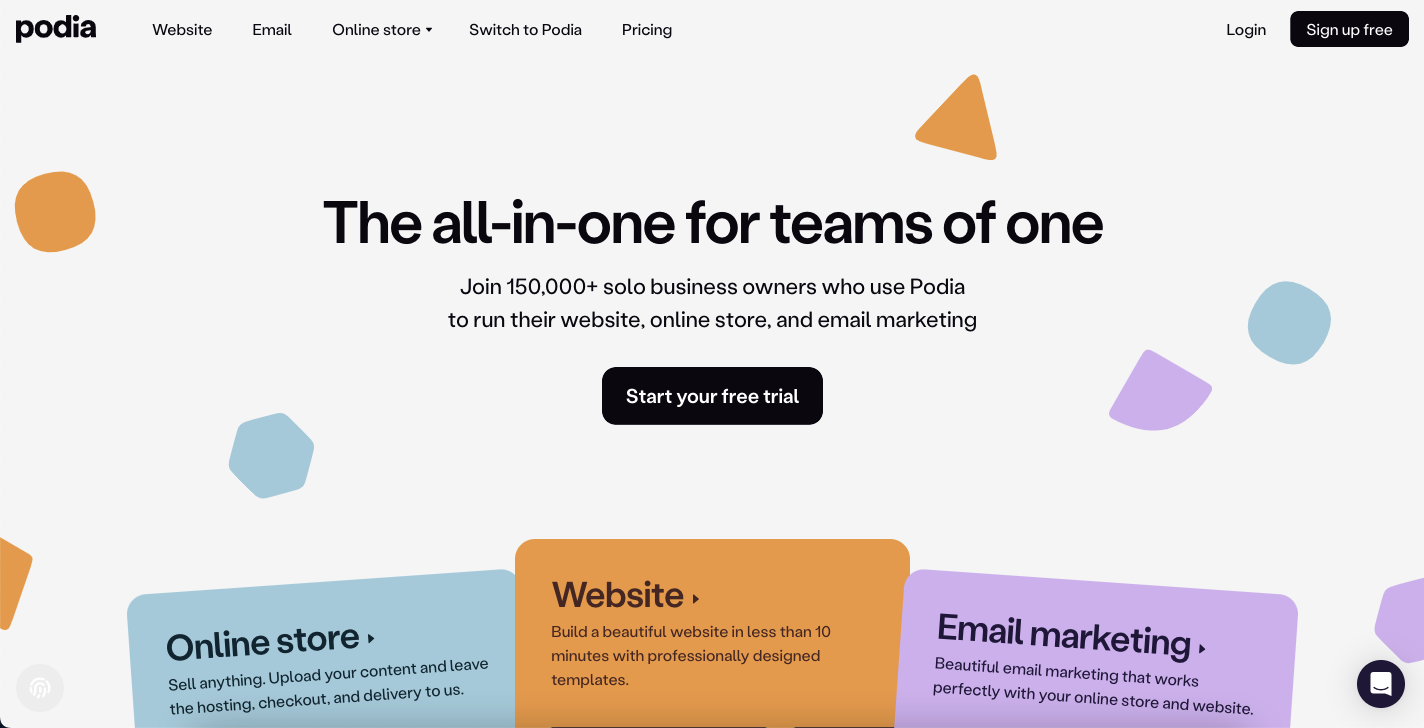
Podia was founded in 2014 with the mission to provide an all-in-one platform for creators to sell digital products without technical headaches.
It simplifies the process by bundling tools for selling online courses, webinars, digital downloads, and community memberships into a single, intuitive interface.
Podia is known for its user-friendly design and transparent pricing, making it an excellent choice for creators who want to manage their entire digital storefront from one place. The platform also emphasizes creator-friendly policies, including zero transaction fees on paid plans.
Features:
- Unlimited courses, students, and products
- Integrated email marketing tools
- Built-in affiliate marketing program
- Website and community builder
- Live chat (messaging) feature
Starting Price: Offers a free plan with an 8% transaction fee. Paid plans start at $33 per month (0% fee).
3. Kajabi
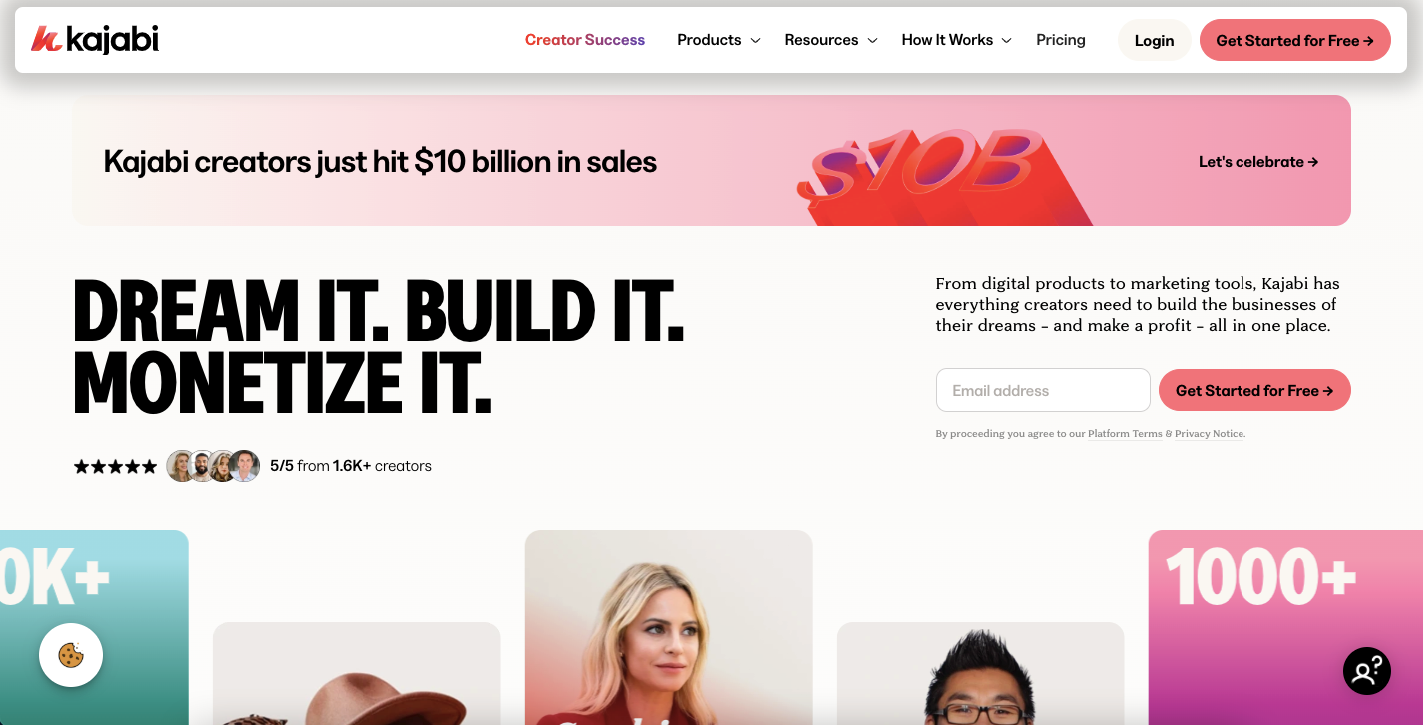
Kajabi, founded in 2010, is a premium, all-in-one platform designed for serious entrepreneurs who want to build a comprehensive business around their content.
It goes beyond simple course hosting by integrating a powerful suite of marketing tools, including email marketing automation, sales pipeline builders, a website and blog builder, and analytics.
While it comes with a higher price tag, Kajabi aims to replace multiple other software subscriptions (like email marketing services and landing page builders), offering a seamless, integrated solution to create, market, and sell digital products.
Features:
- Sophisticated email marketing automation
- Customizable landing pages and sales funnels
- Podcast and coaching product hosting
- Integrated CRM for managing customer relationships
- Mobile app for students
Starting Price: $119 per month.
4. LearnWorlds
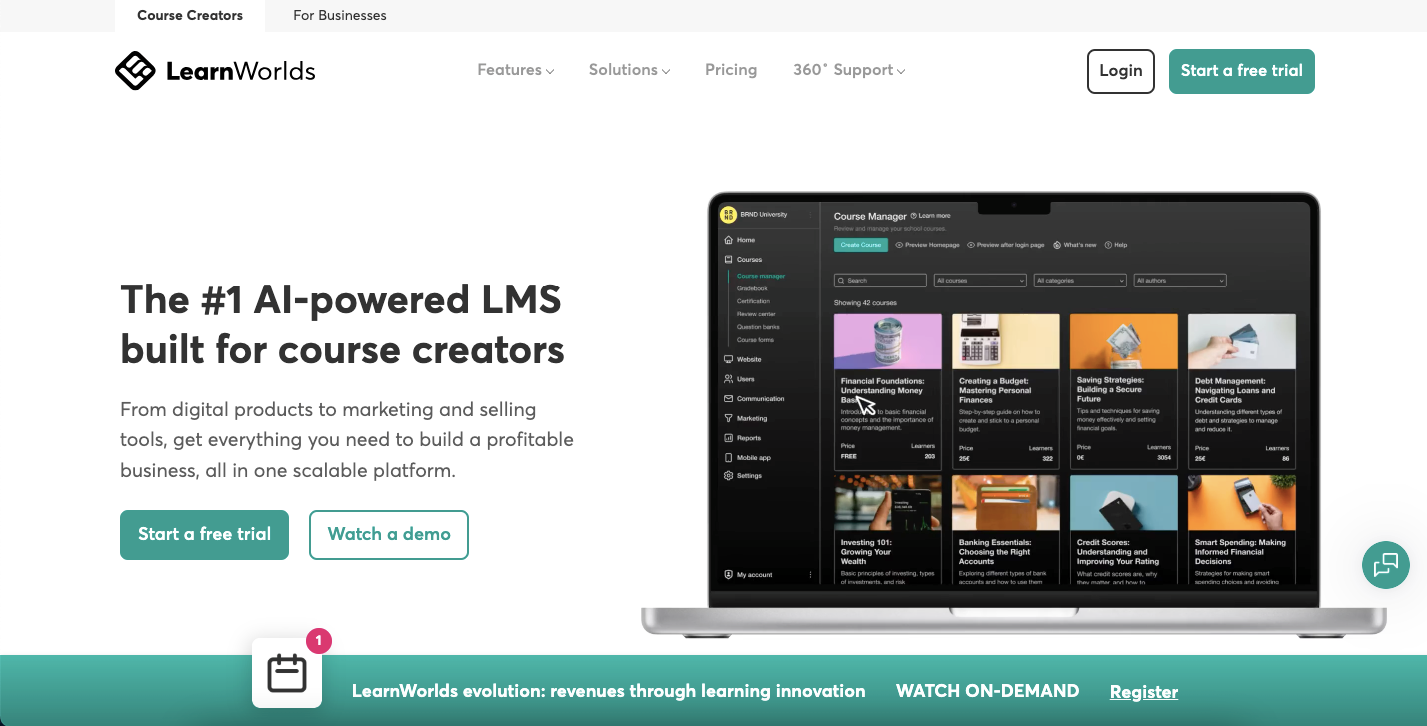
Founded in 2014, LearnWorlds is an online course platform that excels at creating interactive and engaging learning experiences. It is particularly strong for corporate trainers and educators who need advanced features like SCORM compliance, interactive video players, and sophisticated assessment engines.
LearnWorlds allows creators to build a fully white-labeled website and even launch their own branded mobile app. Its focus on social learning, with features like integrated discussion forums and student profiles, helps foster a strong sense of community around the course content.
Features:
- Interactive video with quizzes and pop-ups
- Advanced assessment and certificate builder
- SCORM and HTML5 package compatibility
- Branded mobile app available on higher plans
- Robust social learning and community features
Starting Price: $24 per month.
5. LearnDash
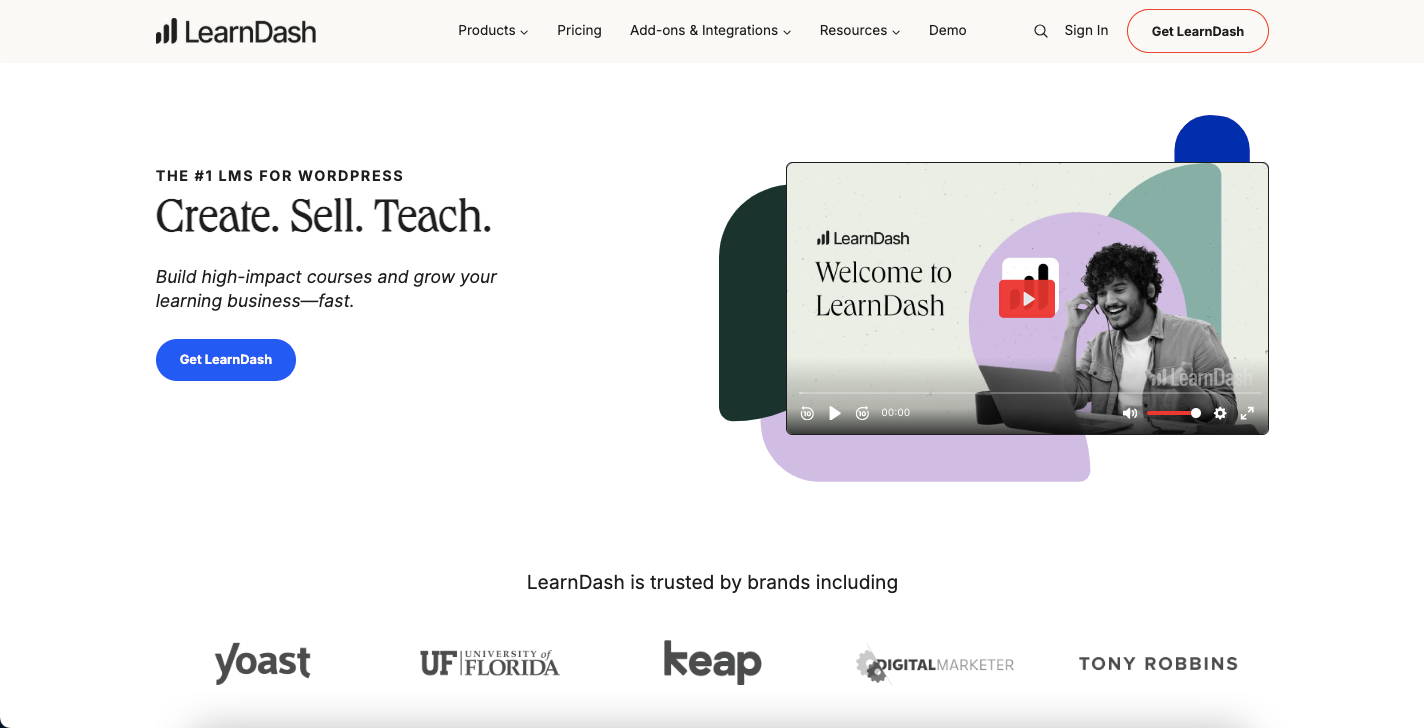
LearnDash is not a standalone platform but a powerful Learning Management System (LMS) plugin for WordPress. First released in 2013, it was created by Justin and Kloe Ferriman to provide a flexible and robust e-learning solution within the WordPress ecosystem.
This makes it ideal for users who already have a WordPress site or want complete control and ownership over their website and course data.
LearnDash offers a sophisticated feature set, including a drag-and-drop course builder, advanced quizzing, and the ability to create multi-tier courses, making it a favorite among professional instructional designers.
Features:
- Integrates directly into any WordPress site
- Advanced quizzing with multiple question types
- Focus Mode for a distraction-free learning environment
- Extensive integration with other WordPress plugins
- One-time purchase model (annual renewal for updates)
Starting Price: $199 per year for the plugin.
6. ClickFunnels
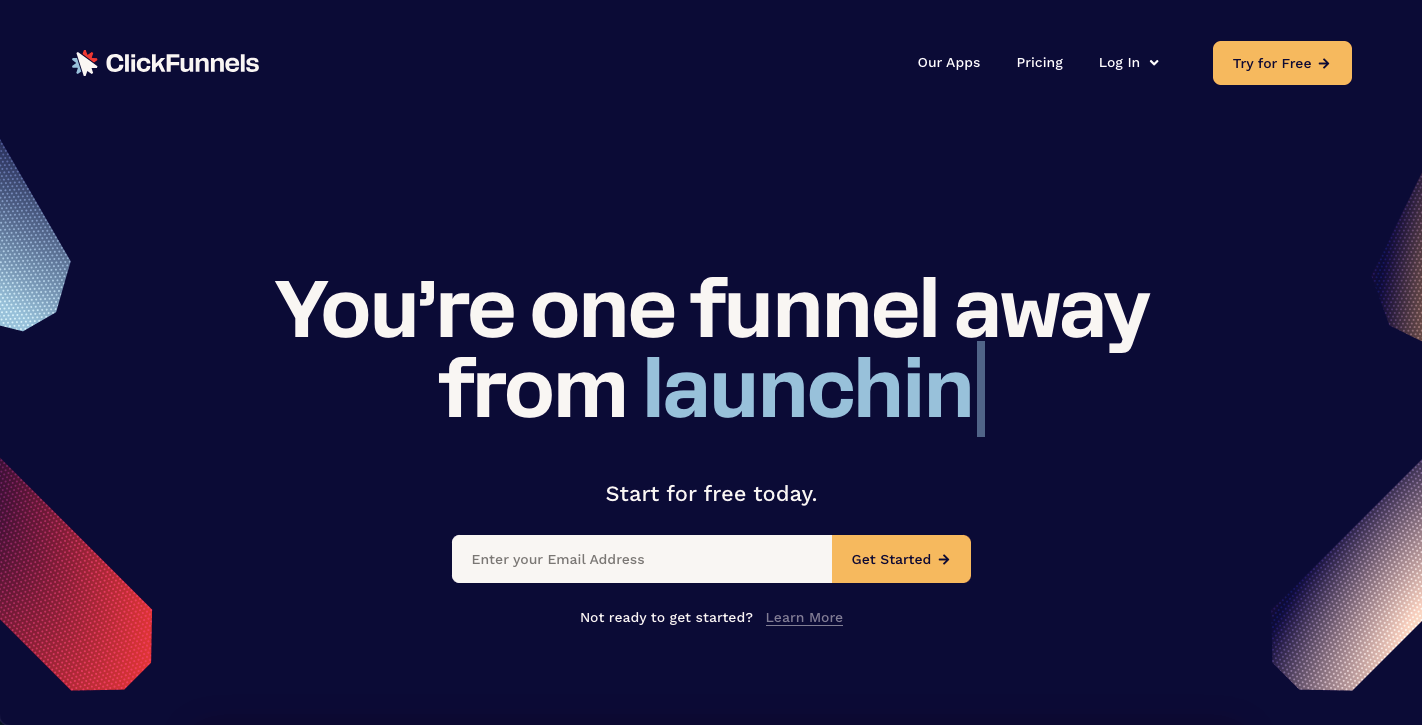
While not a traditional LMS, ClickFunnels is a powerful alternative for creators whose primary focus is on marketing and selling their online courses.
Founded by Russell Brunson in 2014, its core function is to build high-converting sales funnels. Users can create a series of pages—from landing pages and sales pages to checkout and upsell pages—designed to guide a potential customer through the entire purchasing process.
It’s an excellent choice for entrepreneurs who want to maximize conversions and are comfortable integrating their course content hosting with a separate video platform.
Features:
- Visual drag-and-drop funnel builder
- A/B split testing for optimizing conversions
- Integrated affiliate management system
- One-click upsells and downsells
- Membership site creation capabilities
Starting Price: $127 per month.
7. Udemy

Udemy operates on a different model from the other platforms on this list. Founded in 2010, it is a massive online course marketplace, not a platform for building your own branded school.
Instructors can create and upload courses for free, gaining access to Udemy’s vast, global student base. The platform handles all the marketing, payment processing, and hosting.
The trade-off is a lack of branding control, no ownership of student data, and a revenue share model where Udemy takes a significant percentage of sales generated through its marketing efforts.
Features:
- Access to millions of potential students
- No upfront hosting or marketing costs
- Platform-driven marketing and promotions
- Simple course creation and upload process
- Handles all payment processing and student support
Starting Price: Free to create courses; Udemy operates on a revenue-sharing model.
FAQs
Which Teachable alternative is best for WordPress users?
LearnDash is the premier choice for anyone using WordPress, as it is a dedicated Learning Management System (LMS) plugin. It integrates seamlessly into your existing site, granting you complete ownership and control over your course content, branding, and student data within the familiar WordPress environment.
What is the best free alternative to Teachable?
Both Thinkific and Podia offer robust free plans that serve as excellent starting points. Thinkific’s free plan provides core features to build and sell your first course, while Podia’s free plan allows you to create a website and sell a digital download and a coaching product, all without an initial monthly fee.
Which platform offers the strongest marketing and sales tools?
Kajabi is the leader for creators who need powerful, integrated marketing and sales tools. It is an all-in-one platform that includes a sophisticated email marketing system, a visual sales funnel builder, customizable landing pages, and a CRM, effectively replacing multiple other software subscriptions.
Do Teachable alternatives charge transaction fees on sales?
Most leading alternatives, including Thinkific, Podia, and Kajabi, do not charge any transaction fees on their paid plans. This means you keep all your revenue after the standard payment processor fees from Stripe or PayPal. Some platforms, however, may charge a transaction fee on their free plans.
I’m a beginner, which online course platform is the easiest to use?
Podia is widely recommended for beginners because of its incredibly intuitive and user-friendly interface. The platform simplifies the entire process by combining tools for courses, digital products, and communities into one clean dashboard, which significantly reduces the technical learning curve for new creators.
Is it possible to migrate my courses from Teachable to a new platform?
Yes, you can migrate your courses and student data from Teachable to another platform. The process typically involves exporting your course content and student lists (as CSV files) and then importing them into your new platform. Services like Thinkific and Kajabi offer documentation and support to help facilitate this transition.
What is the main difference between Thinkific and Kajabi?
The primary difference is their core focus. Thinkific excels at providing an exceptional student learning experience with advanced course creation tools, quizzes, and community features. In contrast, Kajabi is an all-in-one business solution that focuses on marketing automation and sales funnels to help you grow your entire online business.
Which platform provides the most control over my branding and data?
Self-hosted solutions like LearnDash for WordPress offer absolute control, as all data resides on your own server. Among hosted platforms, Thinkific is a strong contender, providing extensive white-labeling options on its paid plans that allow you to create a fully branded school and own your student data.
Conclusion
Choosing a course platform affects brand perception, revenue, and the student experience. Teachable works well for many, but the best choice depends on goals, budget, and comfort with technology.
- For immersive learning and strong branding control, Thinkific is a strong option.
- For an all-in-one system that handles marketing, sales, and delivery, Kajabi is a powerful choice.
- For WordPress users who want full ownership and deep customization, LearnDash stands out.
- For solo creators who want a simple, affordable, all-in-one tool, Podia offers great value.
Clarify priorities—marketing automation, engagement features, or seamless website integration—and select the platform that best supports those needs. The right fit will help build a sustainable, scalable online education business.

